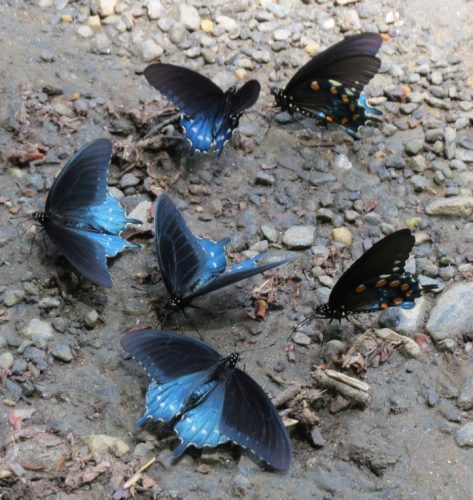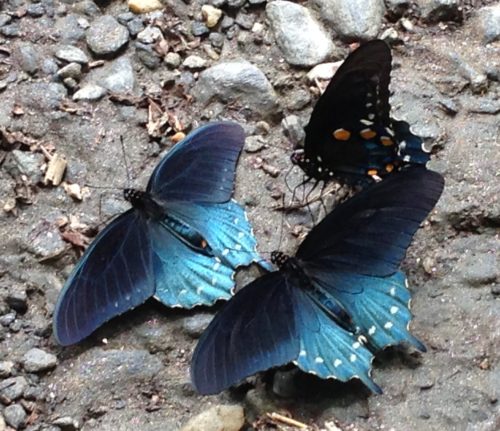In the North Carolina mountains last week, I saw Pipevine Swallowtails every day “puddling” for water and nutrients. These were on a gravel driveway, lingering for hours. Others were on the ground in a grassy area. I’ve never seen this species before, and just about all of them were puddling. I don’t think I saw any on nectar flowers, although there were lots of flowers.
The caterpillars of this species feed on the poisonous pipevine plant, so the Pipevine Swallowtails become poisonous too, which protects them from predators. Good strategy! Some of the other swallowtail species are mimics of the Pipevine Swallowtail, such as the Spicebush Swallowtail, Black Swallowtail, and the dark morph of the Eastern Tiger Swallowtail. Predators avoid the mimics too, so mimicry works well to improve the mimics’ chances of survival. I love the intricacies of relationships in nature!
The most famous butterfly example of mimicry is the toxic Monarch and its mimic, the Viceroy. But these butterfly examples are two different kinds of mimicry. The mimics of the Pipevine Swallowtail are “Batesian mimics,” defined as a mimicry where the model is toxic or dangerous but the mimic is not. Mullerian mimicry is a situation where both species are toxic to predators, and that’s the case with the Monarch and the Viceroy. Each species benefits from resemblance to the other.







